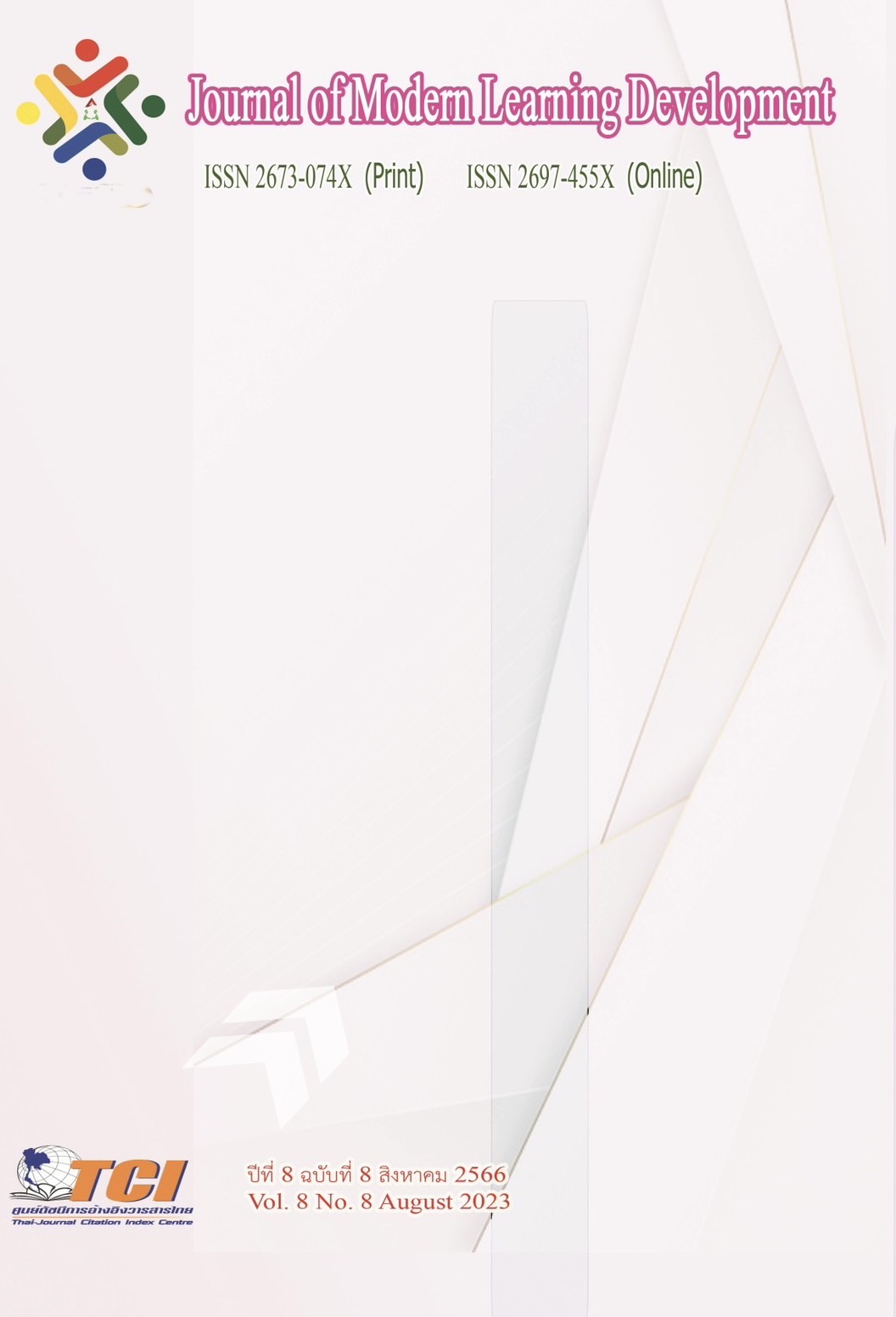Faculty of Engineering Students Opinions On Factors Affecting Nightlife Behavior Mahasarakham University Students
Main Article Content
Abstract
The objective of this research is to study the demographic, social and economic characteristics of Mahasarakham University students with nightlife behavior and explore the Faculty of Engineering Students Opinions Factors Affecting Nightlife Behavior Mahasarakham University Students. The 400 engineering students were used as the case study. Samples were determined using Krejcie and Morgan tables. The methodology of this study was means of sampling (Systematic Random Sampling). The used tool for data collection was a questionnaire rating scale of 5 levels. The statistics used for data analysis were percentage, means and standard deviation.
The research shows that most Mahasarakham University students who go out at night are male students. The place students like the most is a tavern with modern lighting and sound systems. Students usually like to travel on Fridays and weekends. The frequency of traveling 2-3 times a week. In which each student's trip costs an average of 300-400 baht and the source of expenses for student nights is mainly from money received from parents. And engineering students have opinions about the on factors affecting nightlife behavior of students of Mahasarakham University overall is at a medium level (x̄ = 2.87) and when considering each aspect, it was found that the relationship between friends affected the students nightlife out behavior the most (x̄ = 3.29) the result is that the faculty of engineering students are of the view that, friends are the most important thing for students. There is a space to do activities together. Until the opinions or words of friends become something that influences students. Followed by personal attitude (x̄ = 3.14) the result is that the faculty of engineering students are of the view that, students studying at the university level It is an era where physical and mental transformation demands high independence. and is the age that i want to try therefore wanting to find new experiences in life by going out at night meeting people and things that he had never seen before. Next is the social and environmental aspect (x̄ = 2.79) the result is that the faculty of engineering students are of the view that, atmosphere and environment design inside the store is good it greatly affects the students nightlife and in addition, the advertising of entertainment venues through social media that students can easily access with promotions to attract attention all the time. and the aspect that was at the lowest level was family relationships (x̄ = 2.25) the result is that the faculty of engineering students are of the view that, the family is also an institution that forms a good foundation of the mind. and students themselves have sympathy for their parents who have to work hard to earn income to support their families and pay for their education expenses therefore, it is an important part that will directly reduce students nightlife cravings.
Article Details
References
กระทรวงพัฒนาสังคมและความมั่นคงของมนุษย์. (2548). รายงานสถานการณ์เด็กและเยาวชนประจำปี 2546-2547. กรุงเทพมหานคร : ม.ป.ท.
กีรติ เปลี่ยนสมัย. (2555). พฤติกรรมการเที่ยวสถานเริงรมย์ของนิสิตปริญญาตรี มหาวิทยาลัยบูรพา จังหวัดชลบุรี. งานนิพนธ์รัฐประศาสนศาสตรมหาบัณฑิต สาขาวิชาเศรษฐศาสตร์การเมืองและการบริหารจัดการ คณะรัฐศาสตร์และนิติศาสตร์. บัณฑิตวิทยาลัย: มหาวิทยาลัยบูรพา.
จำนงค์ อดิวัฒนสิทธิ์ และคณะ. (2548). สังคมวิทยา. (พิมพ์ครั้งที่ 8). กรุงเทพมหานคร: มหาวิทยาลัย เกษตรศาสตร์.
บุญชม ศรีสะอาด. (2545). การวิจัยเบื้องต้น. (พิมพ์ครั้งที่ 7). กรุงเทพมหานคร: สำนักพิมพ์สุวีริยาสาส์น.
ลิขิต กาญจนาภรณ์. (2547). สุขภาพจิต. (พิมพ์ครั้งที่ 3). นครปฐม : มหาวิทยาลัยศิลปากร.
วิทยากร เชียงกูล. (2552). ก้าวข้ามปัญหาและพัฒนาศักยภาพด้านบวก. กรุงเทพมหานคร : สำนักพิมพ์สายธาร.
ศรีเรือน แก้วกังวาล. (2553). จิตวิทยาพัฒนาการชีวิตทุกช่วงวัย. กรุงเทพมหานคร: สำนักพิมพ์มหาวิทยาลัยธรรมศาสตร์.
สํานักงานคณะกรรมการการศึกษาขั้นพื้นฐาน. (2549). กระทรวงศึกษาธิการ. กรุงเทพมหานคร: กระทรวงศึกษาธิการ.
Erikson, H. E. (1967). Indentity and life cycle. New York : International University.


